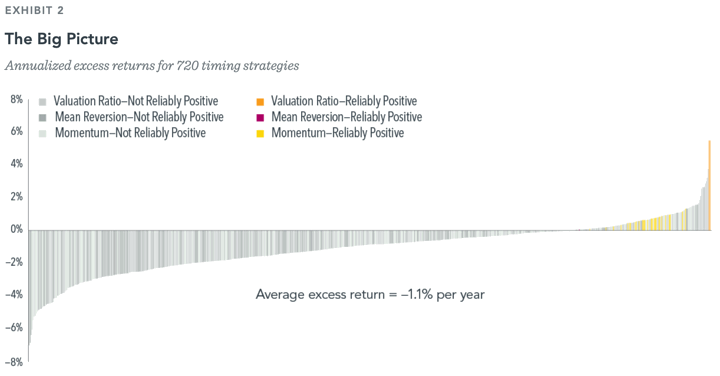The film Tune Out the Noise ended up as a story of how a small group of “data freaks” gathered and analyzed a huge amount of historical data early on in the digital revolution, and made a series of big realizations. The one that most people know is that an S&P 500 index fund does a good job harvesting the “market premium” (the higher return of stocks over bonds) at a very low cost. Vanguard became a juggernaut by offering rock-bottom cheap access to this market premium.
But DFA went further and focused on other discoveries in the data like the “size premium” (smaller-cap stocks tended to outperform larger-cap stocks) and the “value premium” (low price/book ratio stocks tended to outperform higher price/book ratio stocks). This is what DFA does, it digs deeper into the data and charges more for their interpretation of the results. I personally view these as less reliable than the market premium, and at a slightly higher cost. Will they be worth it? I don’t know, and that is why I only place a smaller bet on them. But it is important to remember that the idea of stocks returning more than bonds is also a bet. There is no guarantee.
However, it’s also very useful to know what type of stuff doesn’t work. In fact, a recent NY Times article In the Stock Market, Don’t Buy and Sell. Just Hold (full gift article) highlights a study – done by the same DFA company of “data freaks” – that dug deep into potential market timing methods.
Most of us are better off living with the reality that the stock market moves down as well as up, and that we can’t beat it. A new study provides fresh evidence of why it makes sense to strive for an absolutely middling return. And the study implies that a simple, unspectacular strategy — buying and holding the entire market through low-cost index funds — is probably the best bet for most people.
Here is a DFA article We Found 30 Timing Strategies That ‘Worked’ — and 690 That Didn’t and the actual academic paper on SSRN, Another Look at Timing the Equity Premiums. From the abstract:
We examine strategies that time the market, size, value, and profitability premiums in the US, developed ex US, and emerging markets based on three common timing approaches: valuation ratio, mean reversion, and momentum. Out of the 720 timing strategies we simulated, the vast majority underperformed relative to staying invested in the long side of the premiums. While 30 strategies delivered promising outperformance at first glance, further analysis shows that their outperformance is very sensitive to specific time periods and parameters for strategy construction. Our results highlight the opportunity cost of mistiming the premiums and the importance of discipline for capturing the premiums.
Basically, they looked at 720 different ways that you could perform market timing. To start out, only about 30 out of the 720 actually created excess returns:
But out of those 30, if you tweaked just one of the variables, they mostly fell apart. For example, they found one that got you an extra 5.5% a year. Wow! But if you changed the rebalance period from annual to monthly, the excess return plummeted to only 1.5%. If you changed from international stocks to US stocks, you actually lost 3.8% a year.

In the end, the researchers couldn’t find a single way to time the market that was reliable.




